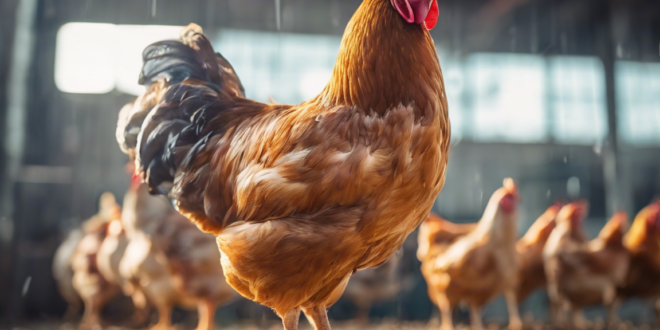Optimizing Layer Nutrition: A Precision Approach to Body Fat Management in Poultry Production
In the competitive world of commercial egg production, understanding and managing layer hen nutrition has become increasingly sophisticated. Modern poultry producers are moving beyond traditional feeding strategies, embracing data-driven approaches that focus on precise body composition analysis. Body fat measurements have emerged as a critical tool for optimizing nutrition, performance, and overall flock health.
The Critical Role of Body Fat in Layer Hen Performance
Body fat plays a pivotal role in layer hen productivity, influencing everything from egg production to overall metabolic efficiency. Excess or insufficient body fat can dramatically impact a hen’s reproductive performance, egg quality, and long-term health. Precise nutritional management requires a nuanced understanding of how body composition changes throughout a hen’s productive lifecycle.
Advanced Body Fat Assessment Technologies
Contemporary poultry management has introduced sophisticated technologies for accurate body fat measurement. These include:
• Dual-energy X-ray absorptiometry (DEXA)
• Ultrasound body composition scanning
• Bioelectrical impedance analysis
• Advanced imaging techniques
These methods provide unprecedented insights into a layer hen’s body composition, allowing nutritionists to develop highly targeted feeding strategies.
Nutritional Strategies Based on Body Fat Measurements
Implementing body fat-based nutrition involves a comprehensive approach that considers multiple factors:
1. Age-specific nutritional requirements
2. Metabolic efficiency
3. Reproductive performance
4. Individual hen variations
By tailoring nutritional interventions to precise body composition measurements, producers can optimize feed conversion, egg production, and overall flock health.
Metabolic Impact of Precise Nutritional Management
Accurate body fat measurements enable nutritionists to develop feeding protocols that support optimal metabolic function. This approach helps prevent common issues such as:
• Excessive fat deposition
• Metabolic disorders
• Reduced egg production
• Compromised immune function
Precise nutritional management can significantly improve overall flock performance and economic outcomes.
Practical Implementation of Body Fat-Based Nutrition
Successfully implementing body fat-based nutrition requires a systematic approach:
• Regular body composition assessments
• Detailed record-keeping
• Adaptive feeding protocols
• Continuous monitoring and adjustment
Producers must invest in training and technology to effectively leverage these advanced nutritional strategies.
Economic Considerations and Return on Investment
While implementing advanced body fat measurement technologies requires initial investment, the long-term benefits are substantial. Improved feed efficiency, enhanced egg production, and reduced health-related issues can generate significant economic advantages for commercial layer operations.
Emerging Technologies and Future Trends
The field of precision nutrition continues to evolve rapidly. Emerging technologies such as artificial intelligence, machine learning, and real-time body composition monitoring promise to revolutionize layer hen nutrition. Producers who stay ahead of these technological advances will be best positioned to optimize their operations.
Challenges and Considerations
Despite the promising potential of body fat-based nutrition, several challenges remain:
• Initial technology costs
• Required specialized training
• Complex data interpretation
• Individual variation among hens
Successful implementation demands a comprehensive, adaptive approach that combines technological innovation with practical expertise.
Conclusion: A New Paradigm in Layer Nutrition
Body fat-based nutritional strategies represent a significant advancement in commercial egg production. By embracing precision measurement technologies and developing targeted nutritional interventions, producers can unlock new levels of performance, efficiency, and flock health.
Key Takeaways
• Body fat measurements provide critical insights into layer hen nutrition
• Advanced technologies enable precise nutritional management
• Targeted feeding strategies can significantly improve flock performance
• Continuous monitoring and adaptation are essential for success
As the poultry industry continues to evolve, producers who prioritize data-driven, precision nutrition will be best positioned to succeed in an increasingly competitive market.
 Good Calories Guide GoodCalories Guide focuses on nutrition, healthy eating, and overall wellness. The site offers practical insights into evidence-based dietary practices, including tips for specific lifestyles such as veganism, keto, and family-friendly meal planning. It also addresses unique nutritional needs for individuals with conditions like diabetes or food allergies, while providing quick and accessible recipes to make healthy living a sustainable and enjoyable choice.
Good Calories Guide GoodCalories Guide focuses on nutrition, healthy eating, and overall wellness. The site offers practical insights into evidence-based dietary practices, including tips for specific lifestyles such as veganism, keto, and family-friendly meal planning. It also addresses unique nutritional needs for individuals with conditions like diabetes or food allergies, while providing quick and accessible recipes to make healthy living a sustainable and enjoyable choice.


